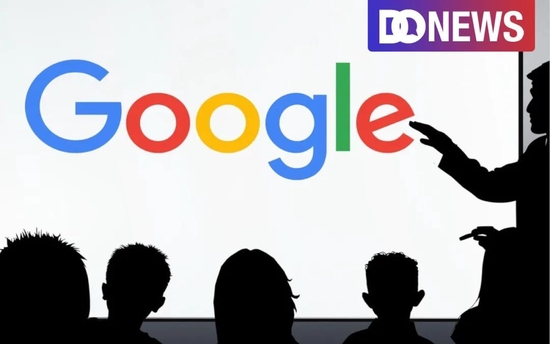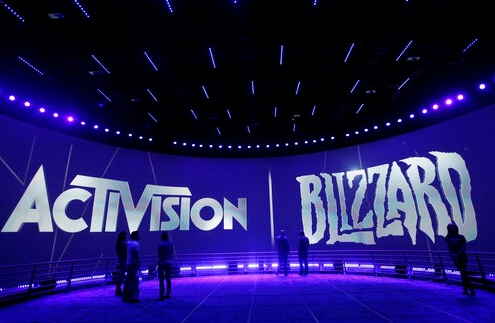your current location is:Home > Finance > depthHomedepth
Google's performance is good, but it is all set off by its peers?

On July 26 local time in the United States, Google parent company alphabet (hereinafter referred to as alphabet) released Q2 financial statements for fiscal year 2022. According to the financial report, the total revenue of alphabet Q2 was US $69.685 billion, compared with us $61.880 billion in the same period of last year, with a year-on-year increase of 13%. Excluding the impact of exchange rate changes, the growth rate reached 16%; According to GAAP (American general accounting standards), the net profit of alphabet Q2 was US $16.002 billion, and the net profit of the same period last year was US $18.525 billion, a year-on-year decrease of 14%; Diluted earnings per share was $1.21, compared with $1.36 in the same period last year, a year-on-year decrease of 11%.
After hours, the market reacted positively to the release of alphabet Q2 financial report. On the same day, alphabet closed at $105.44 per share, down 2.56%. In after hours trading, alphabet shares rose to $110.13, up 4.87%.
Such stock price performance also confirms the intriguing attitude in the previous market: on the one hand, analysts still believe that the revenue and profit level of alphabet in Q2 can reach an acceptable level; on the other hand, as a flag company in Internet enterprises, even if alphabet maintains its leadership, for the whole market, the risk of industry decline has begun to appear on the technology giants behind alphabet, Compared with the number of assets swallowed up, Silicon Valley giants need to consider how to maintain the trust of Wall Street in an increasingly volatile environment.
It is in such a confusing situation that even if alphabet, who is holding the Q2 financial report, is still immersed in the joy of landing in danger, the same question will soon appear in front of him: "in the face of the almost doomed downturn, who can guarantee the stability of alphabet?"
Facing the risk of losing macro support
According to Q2 financial report, the main financial data indicators of alphabet basically meet the expectations of analysts.
Among the main revenue businesses, the structure of alphabet is still stable: the revenue of search and other businesses is $40.7 billion, compared with $35.8 billion in the same period last year, an increase of 13.6% year-on-year; YouTube advertising revenue was $7.34 billion, up from $7.9 billion in the same period last year, a year-on-year decrease of 6.8%; Google network revenue was $8.3 billion, up from $7.6 billion in the same period last year, an increase of 9.2% year-on-year; Gu Geyun's revenue was $6.3 billion, up 36.9% year-on-year from $4.6 billion in the same period last year.
However, in terms of the trend of major financial data indicators, the answer given by alphabet is worthy of vigilance.
Taking the data of the past six complete fiscal years as a reference, from the revenue of US $90.3 billion in fiscal 2017 to the revenue of US $257.5 billion in fiscal 2021, the revenue data of alphabet almost tripled. Based on this data growth trend, any organization that pays attention to this company must admit that it has entered the fast lane of rapid growth.
In terms of data indicators of quarterly net profit, the process of alphabet acceleration is more obvious after the covid-19 pandemic. According to statistics, since the second quarter of 2020, alphabet has entered seven consecutive quarters of rapid growth. In less than two years, the single quarter net profit increased rapidly from $6.959 billion to $20.642 billion, and its upward trend significantly outperformed the growth rate of revenue in the past six full fiscal years.
By the end of 2021, Apple has a market value of nearly 3trillion, Microsoft has a market value of 2.55 trillion, alphabet ranks third with 1.92 trillion, Amazon ranks fourth with 1.73 trillion, and meta, which ranks fifth, has a market value of only 930 billion.
With this round of rapid growth in revenue, alphabet, as one of the four major flag technology companies, has entered the "trillion club" in terms of market value, keeping pace with apple, Microsoft and Amazon.
However, since 2022, the financial report data for two consecutive quarters have shown that the growth rate of net profit in a single quarter has entered a low growth space: among them, the net profit of alphabet Q1 is $16.436 billion, a year-on-year decrease of 8.33%; The net profit in Q2 was US $16.002 billion, a year-on-year decrease of 13.62%, and a further decrease of 2.6% compared with that in Q1.
Three years ago, it is not difficult to see that there is a subtle connection between the upward growth rate of net profit of alphabet for seven quarters and the process of covid-19 pandemic.
Based on social control and work and entertainment needs for epidemic prevention, online demand in major regional markets of alphabet surged. Gartner predicts that the global it cost expenditure will be $3.87 trillion in 2019, while in 2020, when the epidemic accelerates, the global it cost expenditure will be $4.24 trillion. By 2022, the figure of this expenditure project will reach $4.47 trillion.
The huge market demand was then fed back to the market revenue of alphabet. In fiscal 2019, the revenue of alphabet in the U.S. domestic market was $74.843 billion. In fiscal 2020, the revenue of alphabet in the U.S. domestic market was $85.014 billion under the interaction of economic braking caused by the epidemic and the stimulation of loose economic policies. In fiscal 2021, when it coexisted with novel coronavirus in an open manner, the revenue of alphabet in the U.S. domestic market has climbed to $117.9 billion, and the growth rate of revenue in the domestic market has increased from 13.5% to 38.6%.
However, it should be noted that although the loose economic environment is conducive to the stable growth and prosperity of the digital economy market under the epidemic, from a broader perspective, the overall economic boost of major European and American economies through stimulus measures since the epidemic has not achieved the expected effect.
At the same time, the continuous quantitative easing stimulus policy is causing economic damage: so far, the 10-year /2-year US bond yield gap has further expanded in the negative region, once reaching -25.7 basis points, and the degree of inversion is the deepest since the Internet foam era in 2000. This curve has been in an inverted state for more than two weeks, Almost all observers believe that upside down can be regarded as an important indicator of economic recession.
In 2022, in order to deal with inflation, some institutions predicted that the Federal Reserve would raise interest rates six to seven times a year. By the time of publication, the Federal Reserve's fourth interest rate increase of this year had been implemented.
With the macroeconomic environment entering the deflationary cycle, although the market revenue of alphabet is still stable, the confidence of the investment market has been hit repeatedly. This explains that alphabet still evaporated about 22% of its share price after two consecutive quarters of good earnings since 2022.
Therefore, even on the basis of relatively stable market revenue, alphabet still needs to face the risk of losing macro support and the challenge of insufficient market confidence.
Privacy Policy: cat and mouse game between giants
The success of alphabet in gaining market recognition is largely due to the fact that the fundamentals have not collapsed. As for the main business, advertising revenue is still the pillar of alphabet's revenue: the revenue of US $56.29 billion increased by 12% year-on-year.
The positive response of the market, on the one hand, stems from the number itself, on the other hand, it is also set off by the sadness among peers.
After hours on July 21 local time in the United States, the Internet social networking giant snap disclosed the Q2 financial report of 2022, with a revenue of $1.11 billion, a year-on-year increase of 13%, lower than the market expected $1.14 billion; The net loss was $420million, an increase of 178% compared with 150million in the same period last year; The diluted net loss per share was $0.26, up 164% from $0.10 in the same period last year.
Coincidentally, twitter, another Internet technology company, also announced Q2 earnings on July 22. The data showed that Twitter Q2 revenue was $1.18 billion, lower than analysts' expectations of $1.32 billion and $1.19 billion in the same period last year; Q2 had a net loss of $270 million, or 35 cents per share, and a profit of $65.6 million in the same period last year; Excluding stock compensation and other items, the adjusted loss per share was 8 cents, much lower than the analyst's expected earnings per share of 14 cents.
Then the market immediately entered into pessimism, and the key to the decline of the two giants was that the advertising business revenue was severely hit. But coincidentally, behind the unfavorable advertising revenue of the two companies, there is the same shadow: att.
ATT, the full name of APP tracking transparency privacy policy, is a software framework agreement updated by apple in IOS 14.5 official system on April 27, 2021.
According to the description of "user privacy and data use" in the app store, developers need to obtain the user's permission through the apptrackingtransparency framework before they can track users or access the advertising identifier (i.e. IDFA) of their devices.
Before that, both IOS and Android ecosystem could obtain relevant information without user consent by default. According to industry analysis, the policy sets and controls the fatal switch of third-party applications from the traffic entrance, so that the third party loses the opportunity to actively analyze customers' product preferences. For the third party, it loses the data base of advertising effect optimization in the IOS ecosystem, the key link of accurate advertising, and then the technical soil of advertising revenue.
However, this concern did not appear in the first-party manufacturers, such as apple and alphabet.
Based on the strong system ecological construction and the high market penetration of consumer terminals, alphabet, as a first-party manufacturer, not only has inherent link advantages in search, video entertainment and other fields, but also has perfect technical solutions in the avoidance and replacement of cookies and advertising logos.
Moreover, in terms of the attitude of privacy policy, alphabet has also repeatedly released signals to tighten the advertising data flow of users in the Android ecosystem, released a time roadmap to eliminate cookies, and added user permission control over advertising logos, which are all evidence that alphabet is following suit.
Although it is still uncertain how much impact the att policy will have on the industry, from the actual effect, as the first-party data controller, alphabet's repeatedly strong digital advertising business has indeed strongly supported alphabet's revenue for two consecutive quarters since 2022.
It can be said that from the vantage point of business ethics, user privacy, alphabet does not need to act as a radical subverter of the old business order, but also can gracefully highlight and hide various business purposes through horizontal and vertical business actions.
It's no wonder that after snap's share price fell by 80% within the year and meta lost tens of billions of potential revenue due to its privacy policy, Zuckerberg would say bluntly: "maybe they are doing this to help people, but these measures are obviously in line with their competitive interests."
Obviously, all this is more like a cat and mouse game.
Highly anticipated fulcrum and thorns all around
In Q2 financial report, another business revenue of alphabet that has attracted much attention is Google cloud. For a long time, Google cloud has been regarded by the outside world as the best profit fulcrum of alphabet after the advertising business. According to the data, the revenue of Google cloud in this quarter has continued its growth trend, with a revenue scale of $6.276 billion still being the third largest cloud supplier in the world, a sharp increase of 35.6% compared with $4.628 billion in the same period last year. However, at the crucial level of profitability, the number of large losses in the previous quarter showed no sign of narrowing. Following the loss of $931million in the first quarter, the loss in this quarter continued to be $858million.
As a company with technological innovation as an important corporate culture, the advantages of Google cloud are more reflected in the PAAS and SaaS levels. Cloud computing capabilities and software ecosystem service capabilities are the key areas of Google cloud technology and operations.
However, it should be noted that according to the IDC report, by the end of 2021, IAAs still accounts for 22% of the global public cloud market, and the market size has reached US $91.35 billion, with a year-on-year increase of 35.6%, which is the fastest-growing cloud service segment except PAAS.
However, it is embarrassing that in this cloud infrastructure market, due to the need of layout strategy and the lag of entry time, Google cloud, the industry leader with first mover advantages in terms of input and output - Amazon AWS products, has fallen behind by more than one position. According to Gartner statistics, by 2021, Amazon AWS accounted for 38.9% of the global IAAs market share, followed by Microsoft azure, with a market share of 21.1%, while Google cloud was only 7.1%, behind Alibaba cloud's 9.5%.
Under this situation, what Google cloud has lost is not only the opportunity to occupy market share, but also the valuable way to extend upward to customers' PAAS and SaaS market demand.
Similarly, in the field of PAAS and SaaS, where Google cloud strategy attaches great importance, it also faces strong competitors with heavy overlap of products and markets.
Microsoft just released its Q4 financial report for fiscal year 2022. The revenue of smart cloud business was $20.909 billion, which was slightly lower than the $21.07 billion expected by analysts, but still increased by 20% year-on-year. From the perspective of Microsoft's business direction, server products such as azure public cloud, GitHub and windows server are the core drivers of Microsoft's revenue.
By 2021, although Microsoft has only 21.1% market share in the LAAS public cloud market, it is significantly lower than the 38.9% market share of competitor Amazon AWS. However, in the field of SAAS and PAAS, Microsoft is rapidly bridging the gap with Amazon in the IAAs market with its deep industry accumulation and product system under the operating system ecosystem.
According to the financial report data, in 2021, the operating profit margin of Microsoft smart cloud was 14% higher than that of Amazon AWS. In terms of gross profit margin, Microsoft was also 10% higher than Amazon AWS. The main reason is that Microsoft has a large number of software service products with higher brand recognition, better experience and higher added value, so it is more competitive in terms of customer acquisition cost compared with other cloud service giants. Obviously, Google cloud does not occupy an obvious advantage in the competition of Microsoft azure at the technical level.
Similarly, at the level of market target customers, Google cloud has always been regarded as a major political and commercial customer field of market barriers, and Microsoft also overlaps with it highly.
Taking government customers as an example, according to public data collection, Microsoft cloud services the federal government of the United States, the small business administration of the United States, the United States Department of defense, the United States Army and the government of Western Australia. At the level of enterprise customers, American operators at&t, Verizon, European operators Telefonica and BT, and national infrastructure pillar enterprises such as NEC, Telstra and Singapore Telecom are also customers of Microsoft azure.
As the top two companies in the cloud service market, Amazon and Microsoft have made huge operating profits in the cloud industry with obvious Matthew effect. In contrast to the current situation of Google cloud, although the market share continues to expand, it is still difficult to find profits because it is in the investment period without the market scale diluting the cost margin. And it should be mentioned that although alphabet is famous for technological innovation, at the current stage of the cloud market, meeting customer demands is obviously more practical than technology guiding the market. That is, if Google cloud's technology products can't make breakthrough progress and broad market recognition in a short time, from a long-term perspective, they can catch up with Amazon and Microsoft, which are already profitable and have an equally amazing development speed, It will become more difficult.
Similarly, Google cloud has another reality to face: that is to catch up and surpass from Chinese technology giants. With strong market demand and technical capabilities, including Alibaba, Tencent, Huawei and other companies have become closer to Google cloud in market share. It can be predicted that Internet companies growing up in the commercial fertile land in the Asia Pacific field are inevitable rivals of Google cloud.
Although the market has always held an expected attitude towards Google cloud, the company needs to dodge the thorns around more quickly and correctly under the reality that its living space is squeezed.
related articles
Article Comments (0)
- This article has not received comments yet, hurry up and grab the first frame~












